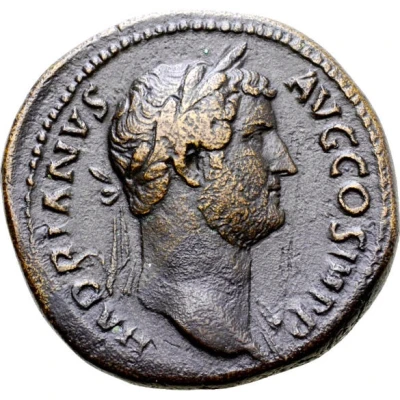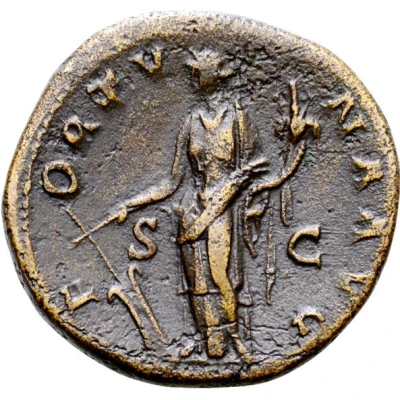


© Roma Numismatics Limited
Sestertius - Hadrian FORTVNA AVGS C; Fortuna
| Orichalcum | 25 g | 32.5 mm |
| Issuer | Rome › Roman Empire (27 BC - 395 AD) |
|---|---|
| Emperor | Hadrian (Publius Aelius Hadrianus) (117-138) |
| Type | Standard circulation coin |
| Years | 137-138 |
| Value | 1 Sestertius = ¼ Denarius |
| Currency | Denarius, Reform of Augustus (27 BC – AD 215) |
| Composition | Orichalcum |
| Weight | 25 g |
| Diameter | 32.5 mm |
| Shape | Round (irregular) |
| Technique | Hammered |
| Demonetized | Yes |
| Updated | 2024-10-06 |
| Numista | N#256861 |
|---|---|
| Rarity index | 83% |
Reverse
Fortuna standing left, holding rudder sometimes set on globe and cornucopia.
Script: Latin
Lettering:
FORTVNA AVG
S C
Translation:
Fortuna Augusti. Senatus Consultum.
Good fortune of the emperor. Decree of the senate.
Comment
Source: Online Coins of the Roman Empire (OCRE)Interesting fact
The Sestertius coin features an image of Fortuna, the Roman goddess of luck and prosperity, on one side, and Emperor Hadrian on the other. The coin was minted during Hadrian's reign (117-138 AD) and was used as a standard circulation coin throughout the Roman Empire. The use of Orichalcum, a copper-zinc alloy, was a common practice during this time period, as it was a durable and cost-effective material for coin production. It's worth noting that the Sestertius coin was an important denomination in ancient Rome, equivalent to one-fourth of a silver denarius, and was widely used for everyday transactions. The fact that this particular coin features both Fortuna and Hadrian makes it a unique and interesting artifact from ancient Roman history.